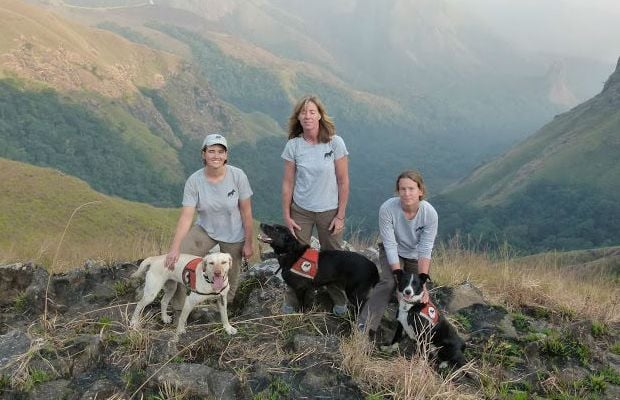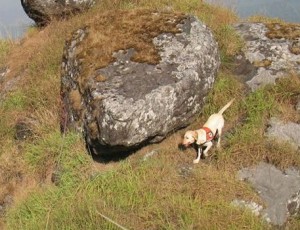
In recent years scientists have begun to realize the potential that dogs can have on their research. They have been using canines more and more to help them when performing experiments. Now, researchers have found a way to use rescue dogs in their search for rare gorillas.
A group of scientists who are trying to figure out the population numbers of the world’s rarest gorilla, known as the Cross River Gorilla, have called upon some specially trained shelter dogs for their sniffing abilities. The endangered subspecies typically dwells in the highland forests on the border of Nigeria and Cameroon.
The gorillas constantly endure pressure from local hunters, which has caused them to be especially wary of humans. Mix this with their stubborn elusiveness and the incredibly difficult terrain of the forests, and these gorillas are almost impossible to find in their natural habitat.
RELATED: 30 Best Hunting Dogs for All Types of Game
Traditional population census methods are not working, and estimates have been frustratingly vague for years. Right now there are thought to be anywhere from 200 to 300 Cross River gorillas in the wild. Recently, a team of researchers from the US and Germany have set out to monitor these numbers more closely with the help of canine trackers.

The researchers decided to use shelter dogs because they were able to select high-energy dogs that were excessively object obsessed. These obsessive, hyper-active traits usually make for poor house dogs, so shelters are usually a great place to find canines with these qualities.
Once they selected the ones they wanted, the researchers trained them to be detection dogs. Over the course of several weeks, the team trained the dogs to track specific smells through progressively more complex training scenarios. They used feces from wild western lowland gorillas to make sure that the dogs were receptive to that type of scent.
Researchers say that a dog that is completely new to the program could take anywhere from nine to twelve weeks to be completely up to speed. Once in Cameroon, the dogs were trained with fresh fecal samples and then taken to a gorilla sanctuary for more extensive training.
RELATED: 11 Best Dog Whisperer Tips from Cesar Millan
At the same time, multiple teams of experienced researchers were testing their tracking skills as well. They set out to find as many fecal samples in the wild as possible. Not surprisingly, the dogs came out well on top. They were able to find 43 fresh fecal samples in 44 days. That’s 0.97 samples per day. The humans were only able to find 75 fresh samples in 175 days. That’s only 0.43 samples per day.
76 of the total samples collected contained enough DNA to be sent out for analysis. This analysis is then used to track the grouping patterns of the gorillas and the movement of individual gorillas. The scientists will eventually be able to identify a portion of the total population and see how often they reoccur. Then they will be able to more accurately estimate the total population of Cross River gorillas.












